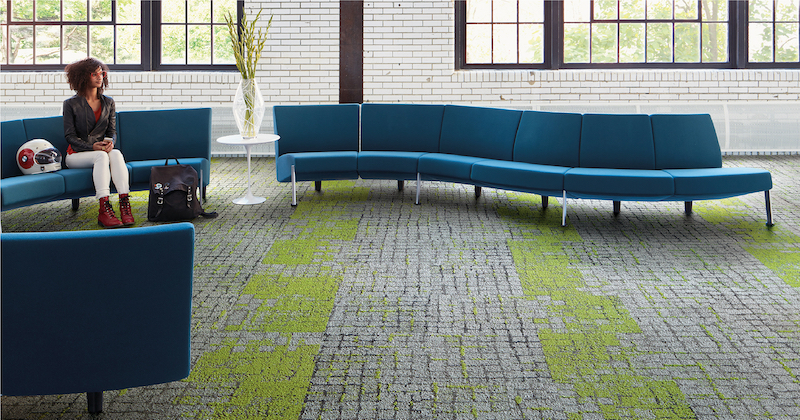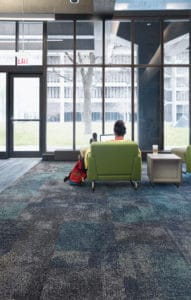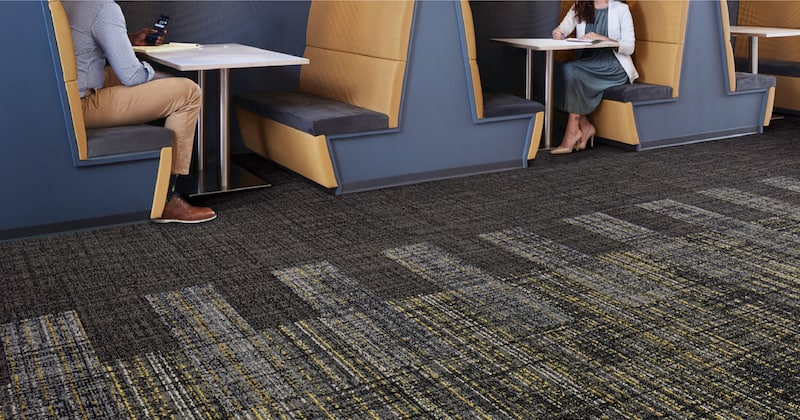Content Sponsored by
When it comes to architectural design in a post-COVID-19 world, we must think about how we can foster human connectivity while also maintaining safety and wellbeing. That means creating a nurturing space where people feel comfortable and safe.

In our recent blog post, Designing for Distance, we explore this unique design challenge and discuss the role of flooring in its solution. Consider this excerpt as you begin to rethink how your facility may adjust to accommodate the needs of this moment:
“Undoubtedly, you’ve been part of the ongoing speculation driving the design world: What does the office look like after COVID-19? What will change? What won’t?
While it’s hard to know what the full impact of the coronavirus will be, it seems likely that when everyone goes back to work, we will be seeing a renewed focus on wellbeing, physical and psychological security, change management, and technology.
The need for physical distancing will require some rethinking of office spaces designed for connection and collaboration between people. And while six feet is far enough apart to be removed from others, it’s not too far away for people to stay engaged. Humans are social creatures, so how can [we design our spaces to] facilitate interaction while keeping safety top-of-mind? And how could modular flooring play a part in those design solutions?”
 These are important questions that we are just beginning to address. However, Interface believes flooring can play an important role in creating that physical and psychological security. In addition to helpful wayfinding, modular flooring can provide an easy measuring tool—using the built-in mathematics of its design—to create cues that prompt safe distancing behaviors. Creating boundaries and zones with flooring will become an effective design technique when rethinking our workspaces.
These are important questions that we are just beginning to address. However, Interface believes flooring can play an important role in creating that physical and psychological security. In addition to helpful wayfinding, modular flooring can provide an easy measuring tool—using the built-in mathematics of its design—to create cues that prompt safe distancing behaviors. Creating boundaries and zones with flooring will become an effective design technique when rethinking our workspaces.
In short, modular flooring design can be not only aesthetically pleasing but also uniquely functional. And as we’re rethinking social norms, the visual cues provided by the floor can help us keep connected from a safe distance. To understand more ways flooring can play a role in designing for distance, read the rest of our blog post.
Lower your carbon footprint.
Trying to meet the sustainability goals of your facility? Help lower your carbon footprint with Carbon Neutral Floors™ by Interface®. All our flooring products—carpet tile, LVT and nora® rubber sheets and tiles—are carbon neutral across their full lifecycle. Good for design. Even better for the planet.




















![[VIDEO] Collect Asset Data at the Speed of Walking a Building](https://facilityexecutive.com/wp-content/uploads/2024/02/maxresdefault-324x160.jpg)